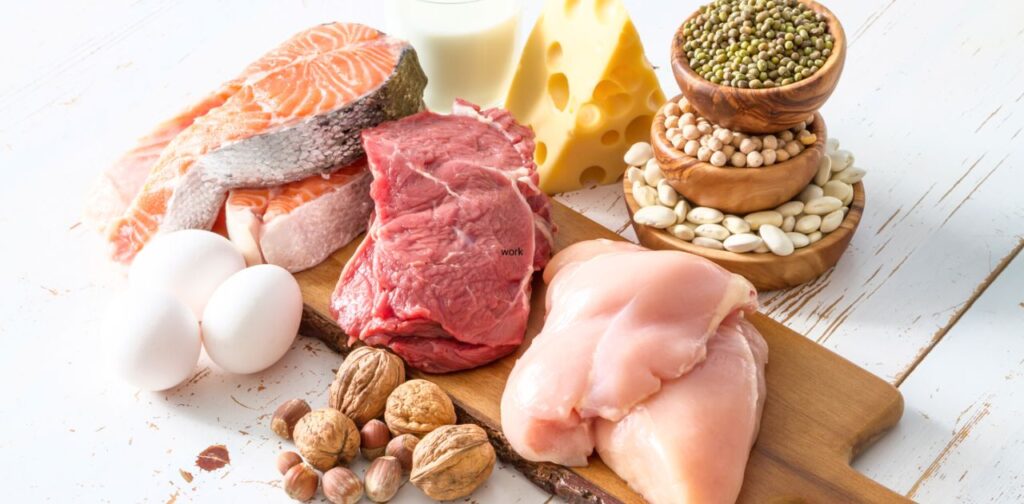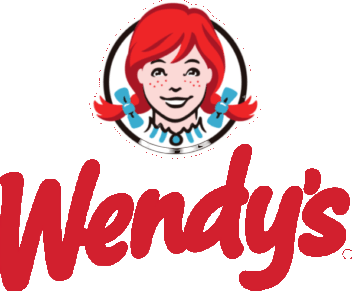Creatine is a naturally occurring compound found in various foods, particularly those of animal origin. It plays a crucial role in energy metabolism, especially during short bursts of intense physical activity. While creatine is synthesized by the body, it can also be obtained through dietary sources. This comprehensive guide aims to explore foods high in creatine, including meat, seafood, vegetarian options, dairy products, plant-based sources, as well as creatine supplements and fortified foods.
Foods High in Creatine
Creatine-rich foods are primarily those that contain animal proteins, although some plant-based sources also provide small amounts of creatine. Including these foods in your diet can help maintain adequate creatine levels in the body.
Meat Sources
Meat is one of the most abundant sources of creatine, particularly red meats such as beef, pork, and lamb. These meats contain high levels of creatine due to their muscle tissue content. Additionally, lean cuts of poultry like chicken breast also provide significant amounts of creatine.
- Beef: Beef is exceptionally rich in creatine, with higher concentrations found in cuts like sirloin, ribeye, and flank steak. Consuming beef regularly can contribute to meeting your creatine requirements.
- Pork: Pork is another excellent source of creatine. Pork chops, tenderloin, and pork loin are among the cuts with relatively higher creatine content. Including pork in your diet diversifies your creatine intake.
- Chicken: While not as high in creatine as red meats, chicken still provides a notable amount of this compound. Opt for lean cuts like chicken breast for a healthy source of protein and creatine.
Seafood Sources
Seafood offers an alternative source of creatine, with certain types containing significant concentrations of this compound. Fish like tuna, salmon, and cod are known for their creatine content, making them valuable additions to a creatine-rich diet.
- Tuna: Tuna is particularly abundant in creatine, making it a popular choice among athletes and fitness enthusiasts. Canned tuna, in particular, is convenient and versatile, allowing for easy incorporation into various dishes.
- Salmon: Salmon is not only rich in omega-3 fatty acids but also contains notable amounts of creatine. Regular consumption of salmon provides a dual benefit of supporting heart health and replenishing creatine stores.
- Cod: Cod is a lean white fish that also contains creatine, albeit in slightly lower amounts compared to tuna and salmon. Including cod in your diet diversifies your seafood intake while contributing to your creatine intake.
Vegetarian Sources
While animal-based foods are the primary sources of creatine, some plant-based options offer smaller amounts of this compound. While the concentrations are lower compared to animal sources, incorporating these vegetarian options can still contribute to overall creatine intake.
- Beans: Certain types of beans, such as kidney beans and black beans, contain small amounts of creatine. While not as concentrated as animal sources, including beans in vegetarian meals adds variety and some creatine to the diet.
- Spinach: Spinach is a nutrient-dense leafy green vegetable that contains trace amounts of creatine. While it may not be a significant source on its own, incorporating spinach into salads, smoothies, or cooked dishes boosts overall nutrient intake, including creatine.
- Avocado: Avocado, known for its healthy fats and rich texture, also contains small amounts of creatine. Incorporating avocado into meals adds creaminess and nutritional value, albeit in modest creatine content.
Creatine Content in Dairy Products

Dairy products, although not as high in creatine as meat and seafood, still contribute to overall creatine intake. Additionally, dairy products offer essential nutrients like calcium and protein, making them valuable additions to the diet.
Cheese Varieties
Certain types of cheese contain modest amounts of creatine, adding to their nutritional profile. Varieties like cheddar, Swiss, and Parmesan are among those with slightly higher creatine content compared to others.
- Cheddar: Cheddar cheese, with its sharp flavor and versatility, contains small amounts of creatine. While not a significant source on its own, including cheddar cheese in sandwiches, salads, or as a topping adds flavor and some creatine to meals.
- Swiss: Swiss cheese is known for its nutty flavor and distinctive appearance due to the holes characteristic of its texture. Alongside its calcium and protein content, Swiss cheese also provides modest amounts of creatine.
- Parmesan: Parmesan cheese, renowned for its rich, savory taste, contains trace amounts of creatine. Grating Parmesan over pasta dishes, salads, or soups not only enhances flavor but also contributes to overall creatine intake.
Dairy Products
In addition to cheese, other dairy products like milk, yogurt, and cottage cheese also contain creatine, albeit in smaller amounts. Including these dairy products in your diet offers various health benefits alongside supporting creatine intake.
- Milk: Milk is a staple dairy product that provides essential nutrients like calcium, protein, and vitamins. While it contains modest amounts of creatine, consuming milk regularly contributes to overall nutrient intake, including creatine.
- Yogurt: Yogurt, particularly Greek yogurt, is rich in protein and probiotics, promoting gut health and muscle recovery. While not as high in creatine as other foods, yogurt still offers nutritional value as part of a balanced diet.
- Cottage Cheese: Cottage cheese is a low-fat dairy product rich in protein, making it a popular choice among athletes and fitness enthusiasts. While it contains smaller amounts of creatine compared to other sources, cottage cheese provides valuable nutrients for muscle repair and growth.
Plant-Based Sources of Creatine
While creatine is predominantly found in animal-based foods, some plant-based sources offer smaller amounts of this compound. While not as concentrated, including these plant-based options diversifies the diet and contributes to overall creatine intake.
Grains and Seeds
Certain grains and seeds contain modest amounts of creatine, although they are not as rich a source as animal-based foods. Including these plant-based options in meals adds variety and some creatine to the diet.
- Wheat Germ: Wheat germ is the nutrient-rich embryo of the wheat kernel, containing various vitamins, minerals, and antioxidants. While not a significant source of creatine, incorporating wheat germ into baked goods or breakfast cereals boosts nutritional content.
- Sesame Seeds: Sesame seeds are rich in healthy fats, protein, and minerals like calcium and iron. While they contain trace amounts of creatine, adding sesame seeds to salads, stir-fries, or baked goods enhances flavor and nutrient density.
- Sunflower Seeds: Sunflower seeds are packed with nutrients like vitamin E, magnesium, and selenium. While not a primary source of creatine, including sunflower seeds in snacks or meals provides essential nutrients alongside a small amount of creatine.
Fruits
Some fruits contain small amounts of creatine, although they are not as concentrated as animal-based sources. While fruits primarily contribute vitamins, minerals, and antioxidants to the diet, those with trace amounts of creatine offer additional benefits.
- Cranberries: Cranberries are rich in antioxidants and vitamin C, known for their potential health benefits, particularly for urinary tract health. While not a significant source of creatine, including cranberries in juices, sauces, or baked goods adds flavor and nutritional value.
- Blueberries: Blueberries are packed with antioxidants, fiber, and vitamins, known for their potential cognitive and heart health benefits. While they contain trace amounts of creatine, incorporating blueberries into smoothies, oatmeal, or yogurt adds nutritional value alongside flavor.
- Kiwi: Kiwi is a nutrient-dense fruit rich in vitamin C, vitamin K, and dietary fiber, supporting immune function and digestive health. While not a primary source of creatine, including kiwi in fruit salads, desserts, or smoothies diversifies nutrient intake.
Supplements and Fortified Foods
In addition to dietary sources, creatine supplements and fortified foods offer alternative ways to increase creatine intake. These products are popular among athletes and individuals seeking to enhance physical performance and muscle mass.
Creatine Supplements
Creatine supplements, typically available in powdered or capsule form, are widely used to increase creatine levels in the body. Creatine monohydrate is the most common form, known for its effectiveness and safety in improving exercise performance and muscle strength.
- Powdered Creatine Monohydrate: Powdered creatine monohydrate is the most researched and widely used form of creatine supplementation. It is typically mixed with water or juice and consumed before or after workouts to support muscle recovery and performance.
- Creatine Capsules: Creatine capsules offer a convenient and portable option for supplementation. They provide a precise dosage of creatine, making them suitable for individuals who prefer a pre-measured supplement.
- Creatine-Infused Beverages: Some sports drinks and energy beverages are fortified with creatine, offering a convenient way to increase creatine intake alongside hydration and energy support. These beverages are popular among athletes and fitness enthusiasts for pre- or post-workout consumption.
Fortified Foods
Certain foods are fortified with creatine to enhance their nutritional value and appeal to consumers seeking additional health benefits. These fortified foods provide an alternative source of creatine for individuals looking to optimize their dietary intake.
- Sports Drinks: Some sports drinks are formulated with added creatine to support hydration, energy, and muscle function during physical activity. These beverages are commonly consumed by athletes and fitness enthusiasts before, during, or after workouts.
- Energy Bars: Certain energy bars are fortified with creatine to provide a convenient and portable source of energy and muscle support. These bars are often consumed as snacks or meal replacements by individuals leading active lifestyles.
- Ready-to-Drink Protein Shakes: Ready-to-drink protein shakes are convenient beverages that combine protein with other nutrients like creatine to support muscle recovery and growth. They are popular among athletes and fitness enthusiasts as a post-workout refueling option.
Conclusion
Incorporating creatine-rich foods into your diet, including meat, seafood, dairy products, plant-based sources, and fortified foods, offers various health benefits and supports physical performance.
Whether through dietary sources or supplementation, maintaining adequate creatine levels contributes to overall health, muscle function, and exercise performance. By diversifying your food choices and incorporating creatine-rich options, you can optimize your nutritional intake and support your fitness goals.
Read Also: Mastering the Art of Food Warmth: A Guide to Keeping Your Meals Deliciously Hot

